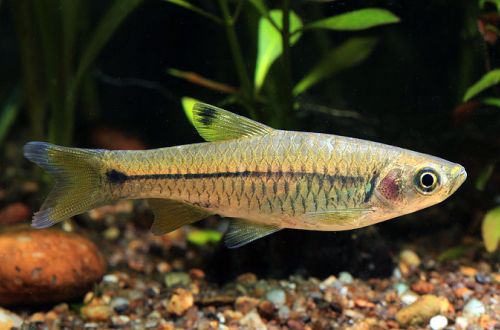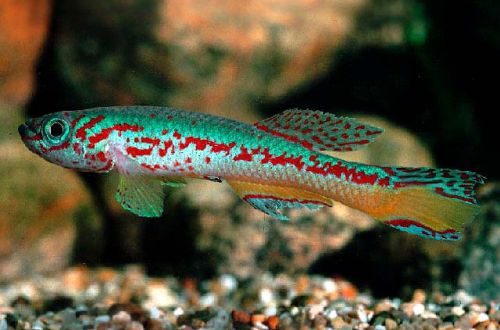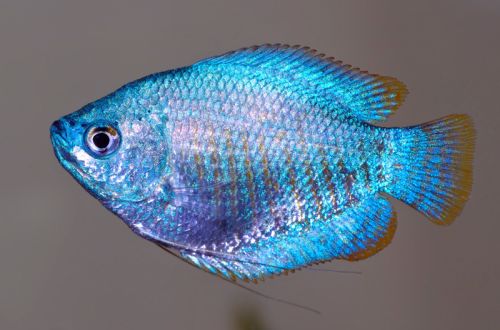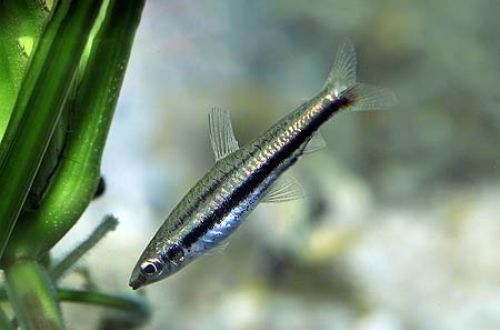
Dorsinota tau hais
Rasbora Dorsinotata, scientific name Rasbora dorsinotata, belongs to the Cyprinidae family. Rasbora is quite rare in the aquarium hobby, mainly due to the not so bright coloration in comparison with other Rasboras. Nevertheless, it has the same set of advantages as its relatives – unpretentious, easy to maintain and breed, compatible with many other species. May be recommended for beginner aquarists.

txheem
Chaw Nyob
It comes from Southeast Asia from the territory of northern Thailand and Laos. Found in the Mekong Chao Phraya river basins. Inhabits shallow channels and rivers with dense aquatic vegetation, avoids the main full-flowing channels of large rivers.
Cov ntaub ntawv luv luv:
- Qhov ntim ntawm thoob dej yug ntses - los ntawm 80 litres.
- Kub - 20-25 ° C
- Tus nqi pH - 6.0-7.5
- Dej hardness - mos (2-12 dGH)
- Substrate hom - ib yam
- Teeb pom kev - ib qho
- Cov dej tsis huv - tsis muaj
- Dej txav - nruab nrab, muaj zog
- Qhov loj ntawm cov ntses yog hais txog 4 cm.
- Khoom noj - txhua yam khoom noj
- Temperament - kev thaj yeeb
- Khaws nyob rau hauv ib pawg ntawm 8-10 tus neeg
Hauj lwm
Adults reach a length of about 4 cm. The color is light beige with a black stripe running all over the body from head to tail. Fins are translucent. Sexual dimorphism is weakly expressed – females, unlike males, are somewhat larger and have a more rounded abdomen.
Khoom noj khoom haus
Undemanding to the diet look. The aquarium will accept most popular foods of a suitable size. The daily diet, for example, may consist of dry flakes, granules in combination with live or frozen daphnia, bloodworms, artemia.
Kev tu thiab tu, kev npaj ntawm lub thoob dej yug ntses
The optimal tank sizes for a small flock of these fish start at 80 liters. In the design, it is recommended to use a sand and gravel substrate, several snags and hardy plants (anubias, bolbitis, etc.). Since Rasbora Dorsinota comes from flowing waters, the movement of oxen in the aquarium is only welcome.
The fish needs high quality water and does not tolerate its pollution well. To maintain stable conditions, it is necessary to regularly remove organic waste (food remains, excrement), weekly replace part of the water with fresh water by 30–50% of the volume, and monitor the values of the main hydrochemical indicators.
Cwj Pwm thiab Compatibility
A peaceful schooling fish, compatible with other non-aggressive species of comparable size. The content in the group is at least 8–10 individuals, with a smaller number they can become overly shy.
Kev yug me nyuam
Like most cyprinids, spawning occurs regularly and does not require special conditions to be recreated. The fishes scatter their eggs in the water column and no longer show any parental care, and on occasion they will eat their own offspring. Therefore, in the general aquarium, the survival rate of fry is extremely low, only a few of them will be able to reach adulthood if there are enough dense thickets of small-leaved plants in the design where they could hide.
In order to preserve the whole brood, separate spawning tanks with identical water conditions, with a volume of about 20 liters and equipped with a simple airlift filter with a sponge and a heater, are usually used. No lighting system required. With the onset of the mating season, the eggs are carefully transferred to this aquarium, where the juveniles will be completely safe. The incubation period lasts 18-48 hours depending on the water temperature, after another day they begin to swim freely in search of food. Feed with specialized micro food or brine shrimp nauplii.
Ntses kab mob
Hardy thiab unpretentious ntses. Yog tias khaws cia rau hauv cov xwm txheej tsim nyog, ces teeb meem kev noj qab haus huv tsis tshwm sim. Cov kab mob tshwm sim thaum raug mob, tiv tauj nrog cov ntses uas twb muaj mob los yog kev puas tsuaj loj ntawm cov chaw nyob (cov thoob dej yug ntses qias neeg, zaub mov tsis zoo, thiab lwm yam). Nyeem ntxiv txog cov tsos mob thiab kev kho mob hauv Aquarium Fish Diseases section.





